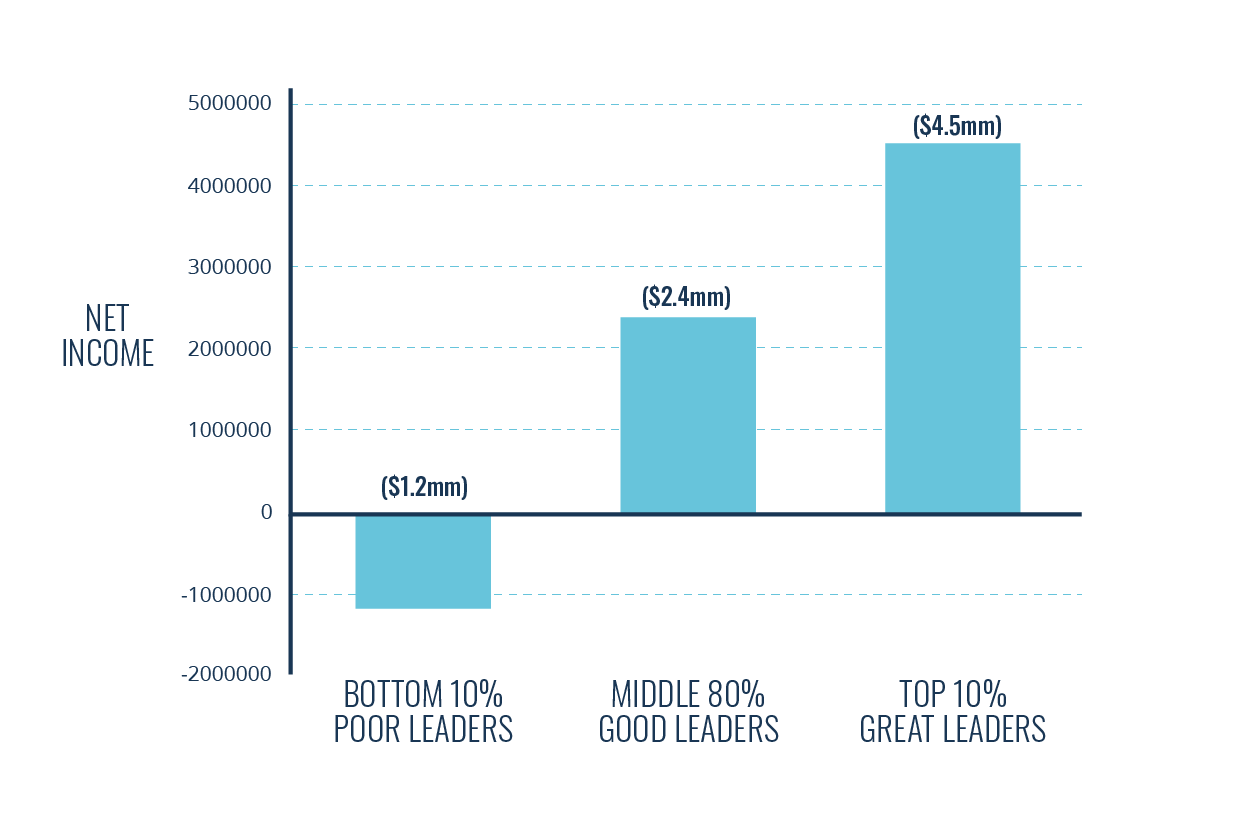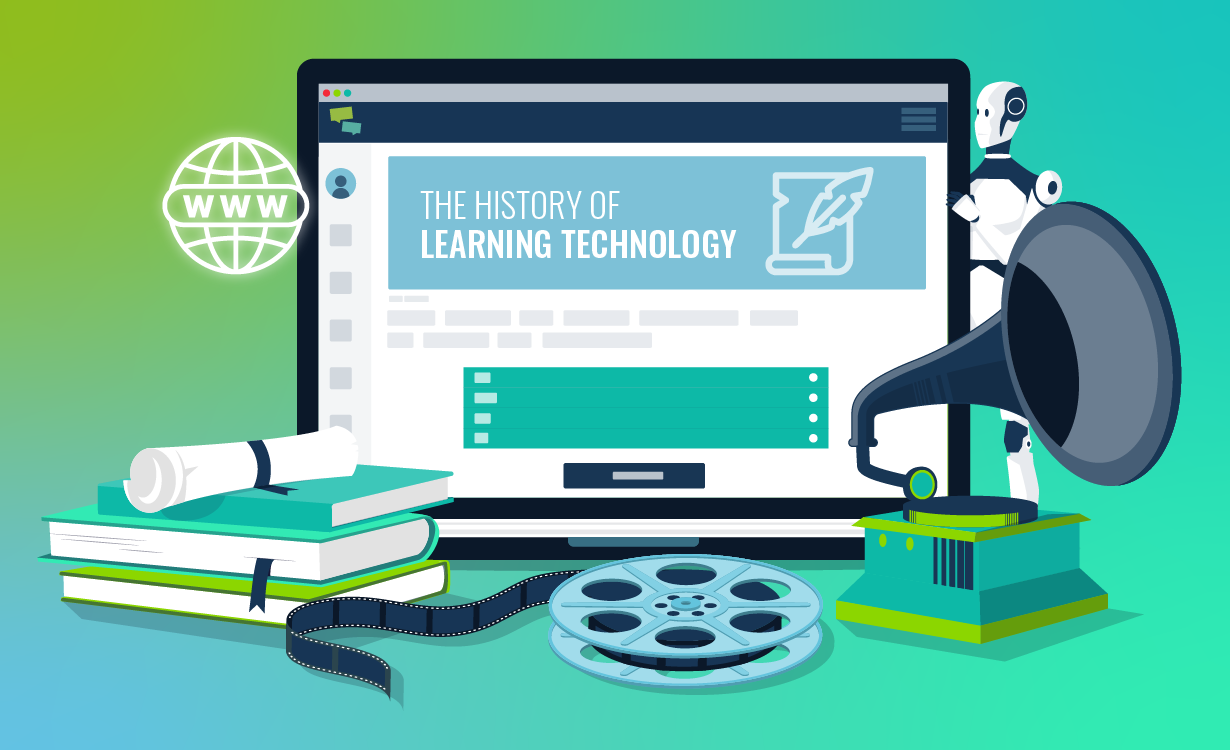 Change is inevitable in today’s highly-disrupted marketplace. Businesses must become more agile and better prepared than ever before to keep up with our new fast-paced world. Naturally, business leaders are a vital part of this process. As such, organisations are placing a more significant emphasis on leadership training, and increasingly taking training online.
Change is inevitable in today’s highly-disrupted marketplace. Businesses must become more agile and better prepared than ever before to keep up with our new fast-paced world. Naturally, business leaders are a vital part of this process. As such, organisations are placing a more significant emphasis on leadership training, and increasingly taking training online.
Leadership training interventions are crucial to the long-term success of every organisation. But the currently prevailing leadership development gap means that there is a lot more work to be done.
In this article, we explore the leadership training environment. To prepare the next generation of well-rounded leaders, we identify what skills future leaders need. Following this, we explore how online learning solutions can boost your leadership training outcomes. Let’s get started!
What Skills Are Required By Today’s Leaders?
Many old-fashioned approaches to leadership training have focused solely on financial planning or how to gain top-down control. This kind of training no longer benefits your leaders, your teams, or your organisation.
The Center for Creative Leadership has identified specific leadership competencies that are currently weak or missing in terms of future leadership needs. These skills include:
- Managing change
- Inspiring commitment
- Leading employees
- Taking initiative
- Building collaborative relationships
- Having a strategic perspective
- Knowing strategic planning
- Embracing participative management
- Being a quick learner
While these are valuable skills, today’s leadership training must reflect your specific organisational needs. Some traits and skills will better serve your company culture than others. As such, when designing your leadership training programme, we recommend that you look at past leaders who have done well in and for your company. You can then use this research to help identify the skills your current leaders need to succeed.
Learn To Lead
You have most likely heard the phrase ‘a born leader’ used to describe someone who is good at leading and seems to have all the skills they need to do so. Perhaps they showcase excellent communication skills, which is an essential trait of a leader.
In some rare cases, there are people with natural leadership qualities that they have been honing since their early years. But typically, leadership skills are not something we inherit that defines if you can be a good leader or not.
Leadership skills don’t come naturally to most people, and they don’t have to. You can train leadership acumen. Similarly, anyone can learn skills that are useful in a leadership position.
However, effective leadership development can be held back by various factors. Some organisations only offer short-term training, confine training interventions to a select few employees or fail to make long-term investments in leadership.
As such, it doesn’t come as a surprise that 86% of Deloitte’s surveyed HR and business leaders consider leadership as one of their most pressing challenges.
Leadership Training = Profit
Developing your leaders to their fullest potential can considerably impact your organisational culture. Your leaders interact both with your customers and your employees. As such, they play a vital role in facilitating your organisation’s success.
Leadership training can significantly increase leadership behaviours performed on the job and increase overall job performance. In addition, training your leaders is also a great way to get higher levels of ROI. For example, 86% of companies in the ICF Global Coaching Client Study said they had at least made back the money they invested in leadership training. In fact, the median return was seven times more than the original investment.
In addition, research on the impact of leadership effectiveness on net income revealed compelling evidence that good leaders create more economic value than poor leaders. Extraordinary leaders, on the other hand, generate far more value than good ones.

As seen in the graphic, the bottom 10% of leaders saw a total of $1.2 million in net income losses. Instead, the top 10% of leaders saw nearly $4.5 million in gains. As such, poor leaders lost money, good leaders made a profit, and extraordinary leaders more than doubled the company’s profit in comparison to the other 90%!
Leadership Development Gap
Even though leadership training can help you boost performance and increase revenue, leadership development is in crisis. Leadership talent shortage is affecting organisations’ outcomes every day. The World Economic Forum has even listed it as the third most important issue on its agenda.
In 2019, 77% of companies reported that they were experiencing a leadership gap. The Centre for Creative Leadership defines a leadership gap as how aligned your current leadership is with what’s thought to be necessary for leadership effectiveness in the future.
According to the Deloitte Human Capital Capability Gap, the Middle East, Southeast Asia and North America have the largest shortfall in capability. Nordic countries are the best performers, but even they have significant capability gaps.
The leadership gap still exists, despite corporate training budgets expanding in recent years. In 2019, organisations spent over $370 billion on training, of which $3.4 billion was spent on leadership development alone. Despite this investment, only 10% of CEOs believe that leadership development has a clear impact on their business.
New Generation of Leaders
The current leadership issue is expected to only get worse over time. Many current leaders are baby boomers who are reaching the retirement age. As a result, millennials will be stepping into leadership positions.
Alarmingly 63% of millennials feel that their leadership skills are not being fully developed by their employers. This holds true, even though 87% of millennials rate career growth and development opportunities as important.
Deloitte’s study drives the point further: more than half of surveyed executives (56%) report that their companies are not ready to meet leadership needs. In addition, only 7% of them state that their companies have accelerated leadership programmes for millennials.
As a result, developing new highly skilled leaders is becoming a top priority for many organisations. Companies need leaders with the right skills to steer them through the future and the changes it will bring. Providing effective training is an obvious way to bridge the leadership skill gap.
Let’s explore how online learning features can help you design and deliver leadership training that results in meaningful business impact — even in today’s challenging business world.
Train Your Leaders With An Online Strategy
Outdated ideas about leadership, digital disruption, misaligned measuring, high turnover, and intense competition contribute to the prevailing leadership development gap.
Leaders in the digital age will encounter new challenges and will need solid leadership skills to face them. They need ongoing training to enable continuous improvement and growth. Online leadership training can cater to those needs.
Like we know, everything that can be taught can also be fostered through online learning! Online learning helps you to take advantage of technology to provide effective and informative learning interventions.
Better still, online learning can often be conducted with less time and resources. In fact, IBM Training found that their employees learnt 5x more material using online learning techniques when compared to offline learning methods.
With a learning management system (LMS), you can design and disseminate online leadership training that can lead to a higher return on your leadership training investment. Let’s explore how you can take advantage of online learning to create an effective leadership training programme.
Social Learning Tools

Your leaders will be working in an increasingly diverse world. As such, the future of leadership development will emphasise soft skills, like communication, to ensure your leaders can build internal and external collaborative relationships.
Investing in leadership development is an excellent way to build trust and show your leaders or leaders-to-be that you care about them and their future. They play a pivotal role in creating and promoting a healthy workplace culture. Positive company culture, on the other hand, inspires productivity and innovation.
When your leaders model the behaviours integral to your organisation, others will begin to join in. But without a social community, it will be more challenging to encourage your leaders to influence and guide others. In fact, leaders account for 70% of the variance in employee engagement.
As such, an effective leader is good at collaborating with others, building teams, coaching people and bringing out the best in them. You can create such leaders only by offering collaborative leadership training.
Online learning platforms advance various social learning features that encourage collaboration between individuals throughout your organisation. For example, Growth Engineering offer social features like Live Chat, Social Clubs, Expert Areas, Social Feeds and much more. These help your leaders to increase efficiency and remove barriers to team productivity.
As such, your online learning environment can be a social place! As 70-90% of all workplace learning happens informally, it’s no surprise that 87% of employees consider social knowledge sharing to be essential.
Your leaders can bring teams together to learn from each other and exchange knowledge and ideas. Similarly, collaboration and group tasks can help you to identify potential new leaders.
Mobile Learning
 Thanks to COVID-19, we’re now spending even more time on our mobile devices. In fact, during April 2020, the average user spent 4.3 hours on their mobile device per day. This is equal to a quarter of their waking time.
Thanks to COVID-19, we’re now spending even more time on our mobile devices. In fact, during April 2020, the average user spent 4.3 hours on their mobile device per day. This is equal to a quarter of their waking time.
And that’s why mobile learning is so popular. Younger generations are using mobiles more than ever before. As we are entering the age of millennial management, leadership training must develop along with modern needs.
One way to meet these needs is to ensure your leaders can access their training on all devices, including their smartphones. As our devices are always readily available, mobile learning fits more snugly into our everyday lives. As such, it comes as no surprise that mobile learning is one of the fastest-growing markets within the eLearning industry, with an annual growth of 23%.
Mobile learning ensures precisely that! Your leaders and managers can now learn anywhere and anytime. Be it during the commute to work or whilst relaxing in a coffee shop. Mobile phones allow them to acquire knowledge on the go.
We all learn at different speeds. Mobile learning eliminates the pressure of understanding a particular concept during a traditional training intervention. Instead, your leaders learn at their own pace. Mobile learning also allows your leaders to access information at the point of need. This helps them to stay agile within the ever-changing business environment.
Last but not least, mobile learning allows collaboration across country borders which can be extremely useful in creating a knowledge sharing culture. It encourages your leaders to keep in touch with others to share ideas, while also increasing the possibility of cultivating different online learning communities.
Bite-Sized Training
Addressing the leadership development gap is a critical challenge facing today’s business world. As such, it is clear that a lot of training needs to be conducted in this area. But overloading your leaders with all available information at once is not the most effective way to provide online leadership training. Instead, break up the enormous heap of information into short and self-paced segments.
Microlearning means delivering content in bite-sized chunks that typically take less than 10 minutes to complete. This concise and straightforward format makes content easier to understand and improves retention. In fact, microlearning makes knowledge transfer 17% more effective. Like most of us can imagine, facing short-form training is less intimidating than tacking a whole eLearning course at once.
However, microlearning is not only limited to an eLearning unit or specific topic. It can be applied to many content formats, whether it’s a blog, animation, podcast or a quiz and touch on important leadership topics from problem-solving to communication. For example, our Battles allow you to engage your leaders with knowledge-reinforcing quizzes that only take a few minutes to complete!
Microlearning is a mobile friendly way to learn. The speedy essence of microlearning matches the portable nature of the mobile device. Learners can access training whenever it suits their schedule. In addition, your leaders can explore content at their own pace. As such, it’s not surprising that millennials, the next generation of leaders, prefer to learn with microlearning methods.
But microlearning does not only benefit your learners. Microlearning content is also faster to produce. As a result, you can produce more leadership training content in less time!
Coaching

Coaching should be integrated into every leadership programme, as it is an excellent way to pass on some crucial leadership skills, experience and knowledge. It prompts leaders to reflect upon their learning and draw conclusions based on it.
Leadership coaching has various benefits. It empowers your leaders to do exceptional work. It also provides them with new insights and perspectives from their coach. Furthermore, it’s a great way to improve communication and enhance overall performance. In fact, 86% of companies state that their leadership coaching investment at least paid for itself.
By using a learning management system, you can provide coaching and eliminate any geographical barriers. Your prospective or new leaders can easily connect with coaches from all around the world to gather insights and valuable lessons of leadership. Innovative online learning features help to facilitate that relationship.
Mentoring and coaching scheme is also essential for your internal company culture. Leaders play a significant role in the development and engagement of their teams. Over 70% of individuals who receive coaching say they improved their work performance and relationships and gained more effective communication skills.
By offering coaching and mentoring throughout your organisation, it will become a standard part of every manager’s experience. They can absorb all the knowledge like a sponge and prepare better for their leadership position.
Gamification
Gamification means taking the mechanics that make games so enjoyable and applying them to non-gaming contexts to make them more engaging. Thanks to ever-evolving technology, gamification can be used in all kinds of training programmes, including online leadership training.
In fact, gamification strategies are incredibly effective in developing different skill sets. You can focus on fundamental leadership skills, such as negotiation, communication, change management, problem-solving and much more.
Training someone to be equipped with the most desirable leadership skills can be rather challenging. Gamification helps to create powerful training experiences by encouraging spaced repetition.
According to The Forgetting Curve, we forget 90% of what we learn within a week without reinforcement. Spaced repetition is the key to improved knowledge retention, as it helps your leaders to conquer The Forgetting Curve.
But gamification is not just a fun way to learn. It offers vast benefits that can result in a meaningful return on your training investment. After all, 72% of employees believe that gamification motivates them to work harder.
A safe game environment fosters exploration and innovation. Furthermore, immediate performance feedback shows your leaders the cause and effect of their decision-making. This gives them a chance to improve and learn from each training intervention.
Here at Growth Engineering, we consider ourselves to be gamification experts. In fact, gamification is one of our favourite allies in waging war against dull online learning. Our online learning platform is packed with innovative gamification features to drive engagement, content completion and business impact.
Your learners will get the spark to continue learning as they earn Experience Points and Badges for completing content or interacting with the platform. The rewards will affect your leaders’ position on the Leaderboard. As such, gamification boosts healthy competition and makes leadership training more addictive (in a good way, of course!).
Qualifications

No matter how young or old, we’re all probably familiar with the exciting accomplishment of attaining a qualification. It can have an immense influence on our motivation. In fact, 82% of employees are more engaged, and 79% work harder, when they receive recognition.
However, on top of success and recognition, qualifications are an excellent way to demonstrate and validate the learning of skills. With qualifications, both new and seasoned leaders can become more adept at developing employees, inspiring and guiding teams, managing change, and effectively influencing stakeholders across the whole organisation.
You can also get a better understanding of the skills and competencies of your leaders and quickly respond to any prevailing skills gaps. Providing qualifications, such as the ILM leadership and management qualifications, at all levels provides a clear pathway for progression.
By adding qualifications to your online leadership training, you can offer a range of development opportunities to your leaders. They can improve the skills they need to lead the organisation while benefiting from the other features online learning platforms offer. The qualification certificate is then stored and accessible via the learning management system.
Custom Learning Pathways
The amount of content on leadership has reached mind-boggling levels. In fact, a Google search for ‘leadership’ brings close to seven billion results. From books to articles and white papers to videos, trying to find the most helpful content may seem like a tremendous task.
While your training content library might have less available resources than Google, it can quickly become challenging to make sure your leaders find all the content they need to excel in their positions. Instead of just crossing your fingers and hoping for the best, you should create learning pathways to make the training process more transparent.
A learning pathway means constructing a route through your training programme. It acts as a roadmap and guides your learners through their leadership training. You can also rearrange training topics so that they build upon each other more effectively.
One-size-fits-all training is a thing of the past. Customisable learning pathways enable you to push and pull different content depending on the needs of the individual. After all, new leaders might have different requirements than someone who has been in a leadership position for many years.
As such, a personalised learning experience ensures the content is relevant for each and every learner. This plays a huge part in generating learner engagement. No one wants to learn about something they will never need. And did you know, 94% of organisations think that personalisation is critical to their success?
Final Words
Leadership is a crucial part of your organisation and its well-being. Your leaders don’t just make big decisions. They also need to be able to communicate openly and effectively, motivate your team to work towards a common goal, and quickly adapt to unforeseen challenges.
However, today’s business world is ever-evolving and changes at the speed of a tornado. This has contributed to the current leadership development gap crisis. As a result, leadership training has never been more important. Luckily, online training comes with a wealth of benefits and can be used to train leaders, managers and employees alike. As such, we think that online leadership training is the way forward!
Do you want to know more about the business impact online training can have? Explore our guidebook ‘The Secret to Business Impact’ today to supercharge your training!








